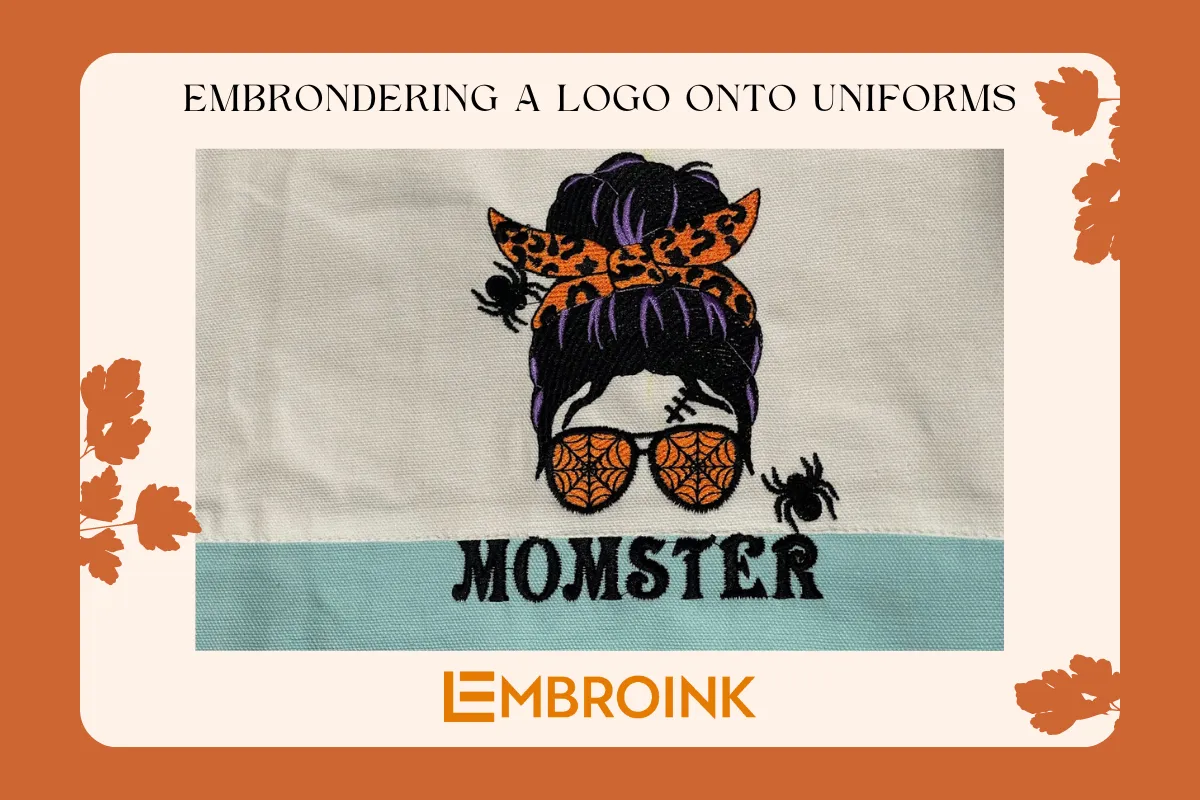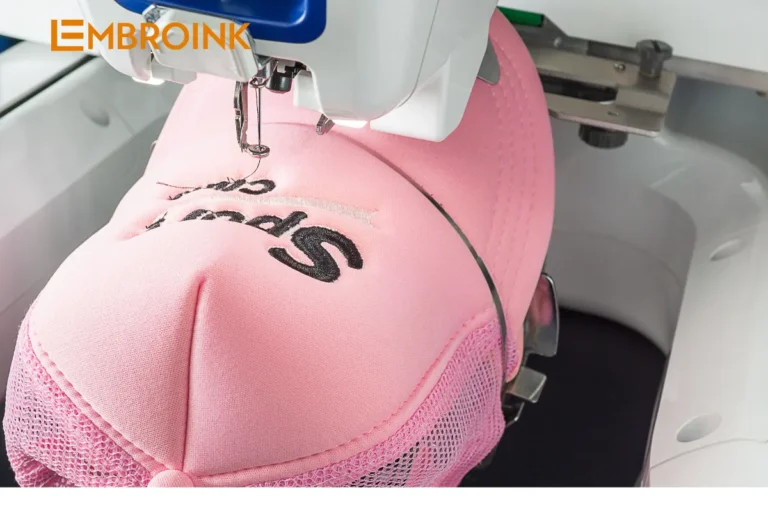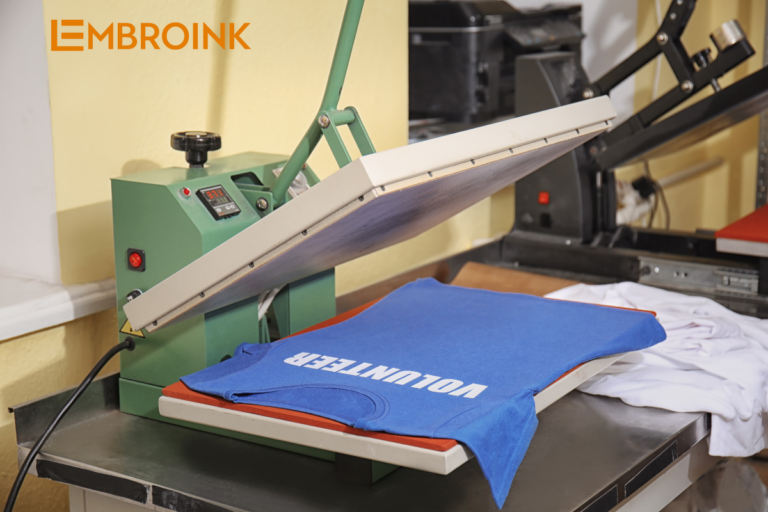What is embroidering a logo onto uniforms? When to embronder a uniform logo?
It’s no exaggeration to say that a logo is the face of a brand. It conveys the company’s message and values through imagery and text. Understanding this, incorporating the logo in Facebook advertising posts, on signage, packaging, and standees helps imprint the brand’s image into the minds of customers. Additionally, another simple yet effective method adopted by many businesses is embroidering the logo onto uniforms. So, what is embroidering a logo onto uniforms? How does it differ from printing a logo? What are the different methods of logo embroidery? How should embroidered designs be maintained? Let’s explore these topics with EmbronInk in the following article!
What is embroidering a logo onto uniforms?
What is logo? – A logo is a graphic element composed of images, colors, and text, encapsulating a substantial amount of information. It is used to identify a brand for a company, organization, or an individual.
Embroidering a logo onto clothing is not merely a practical application; it’s an art form that has been practiced for centuries. This intricate process involves skillfully manipulating thread or yarn to meticulously recreate the logo’s design and message onto various fabric materials. Whether done by hand or with the precision of modern machines, embroidery demands attention to detail, patience, and craftsmanship.
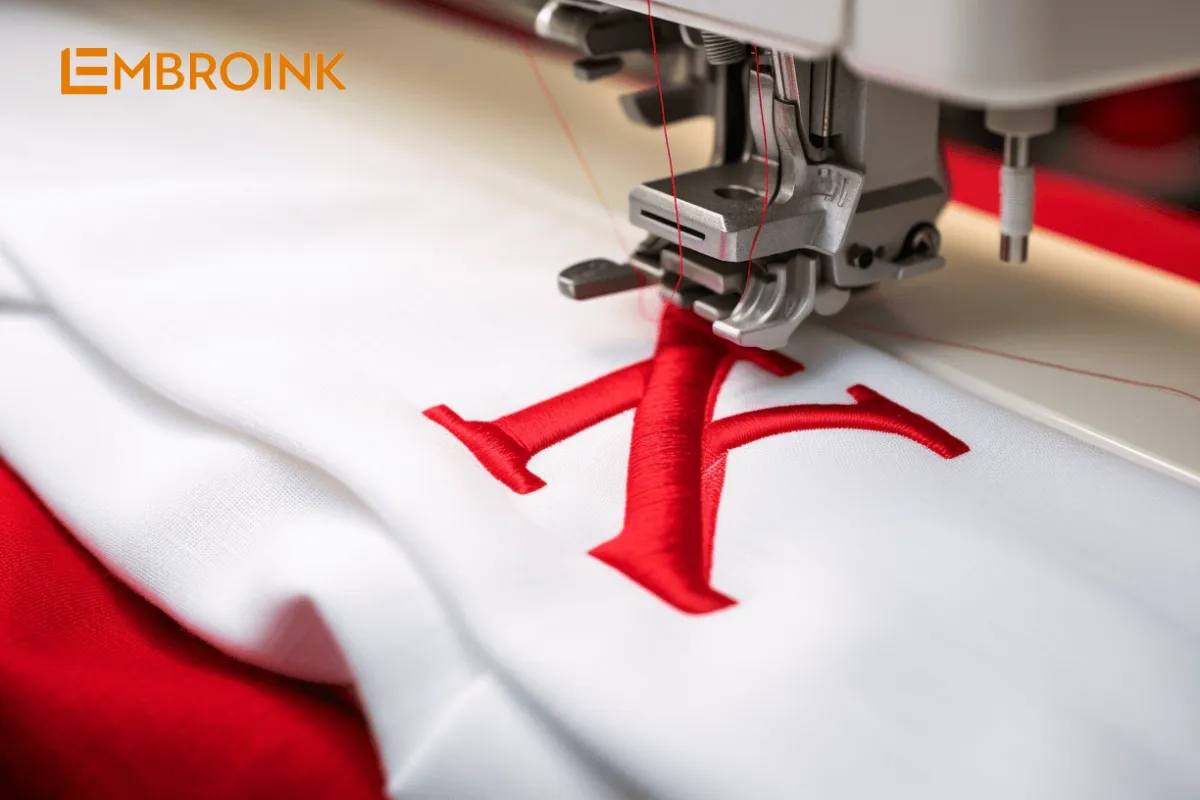
The origins of embroidery trace back to ancient civilizations, where it served not only as a means of decoration but also as a symbol of status, identity, and cultural expression. Over time, embroidery techniques evolved and diversified, reflecting the unique styles and traditions of different regions and societies.
Today, embroidery remains a highly esteemed craft, appreciated for its aesthetic appeal, durability, and ability to add a personalized touch to garments and textiles. From intricate floral motifs to intricate company logos, embroidered designs enhance the visual appeal of clothing, making a bold statement and conveying a sense of sophistication and quality.
The role of embroidering a logo on uniforms
- Recognizing the Company and Its Products/Services: Embroidering a logo onto uniforms helps customers easily identify the products or services a company offers. When employees wear uniforms with the company logo, every interaction with customers or partners serves as a reminder and quick recognition of the brand. This is particularly useful in service industries where direct customer interaction is frequent, such as in restaurants, hotels, or retail stores.
- Conveying Brand Messages and Values: A logo is not just a representative image of a company; it also conveys the messages and values that the company wishes to impart. Embroidering the logo on uniforms is an effective way to emphasize and disseminate these values. Every time employees appear in their uniforms, they help the company communicate important messages to customers and the public.
- Increasing Sales Advantage: A carefully and beautifully embroidering a logo not only creates recognition in the minds of customers but also helps increase the sales advantage. When customers see the company’s logo embroidered on uniforms, they are more likely to trust the quality of the products/services provided. This creates a positive impression and encourages customer purchasing decisions.
- Brand Positioning: Embroidering a logos on uniforms helps businesses clearly and consistently position their brand. Each time customers see employees wearing uniforms with the company logo, the brand is gradually reinforced and remembered. This not only enhances brand presence but also creates a consistent and professional image for the company.
- Demonstrating Professionalism: The professionalism of a company is shown not only through its products or services but also in how it presents itself to customers and partners. Embroidering logos on uniforms is a way to showcase professionalism and team spirit. When all employees wear uniforms with the company logo, it not only creates a unified and attractive image but also demonstrates each member’s commitment and pride in the brand.
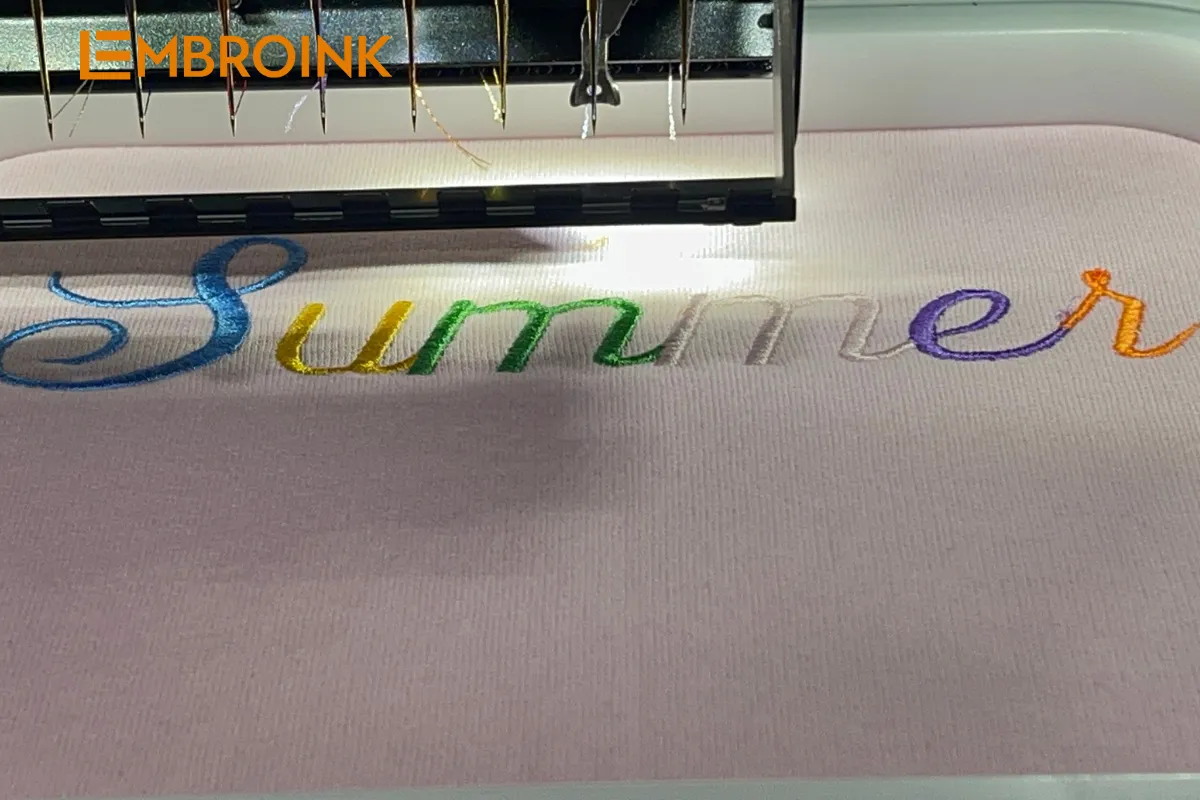
Advantages and disadvantages of the logo embroidery method
Advantages:
- Long-lasting usage: Embroidered logos can be used for a long time while maintaining color and durability.
- No color bleeding or fading during washing: Embroidered logos do not bleed or fade during washing, helping the garment maintain its new appearance.
- Time and effort-saving in washing and maintenance: No need to worry about special washing or maintenance for garments with embroidered logos.
- High artistic value: Embroidered logos bring high-quality and artistic beauty, creating focal points for garments.
Disadvantages:
- High cost: Embroidering logos tends to be more expensive than other printing methods.
- Limited by complex patterns and colors: Embroidered logos may be limited when applied to complex patterns or colors.
- Unable to embroider large-sized images: Embroidered logos cannot reproduce large-sized images, limiting flexibility in design.
- Easily damages garments, especially thin, light fabrics: Embroidering logos can cause fabric to become damaged, especially for thin, light garments.
When should we choose to embroidering a logo on uniform?
We should choose to embroidering a logo onto clothing in the following cases, based on the advantages and disadvantages listed by EmbronInk:
- You want to enhance the longevity of the logo: If you aim to prolong the usage time of the logo, embroidery is a suitable option due to its durability and resistance to color fading or bleeding.
- You want to enhance aesthetic value and artistic quality: Embroidery adds a high level of artistic value and aesthetic appeal to uniforms, making them visually appealing and sophisticated.
- Your uniforms are made of thick, elastic materials: Embroidery works well on thick, elastic fabrics, ensuring the logo remains intact without compromising the garment’s quality or appearance.
- Simple designs, small sizes: If your logo consists of simple designs and small sizes, embroidery is a suitable choice. It allows for precise reproduction of details and maintains clarity, enhancing the overall look of the uniform.
Types of embroidery techniques
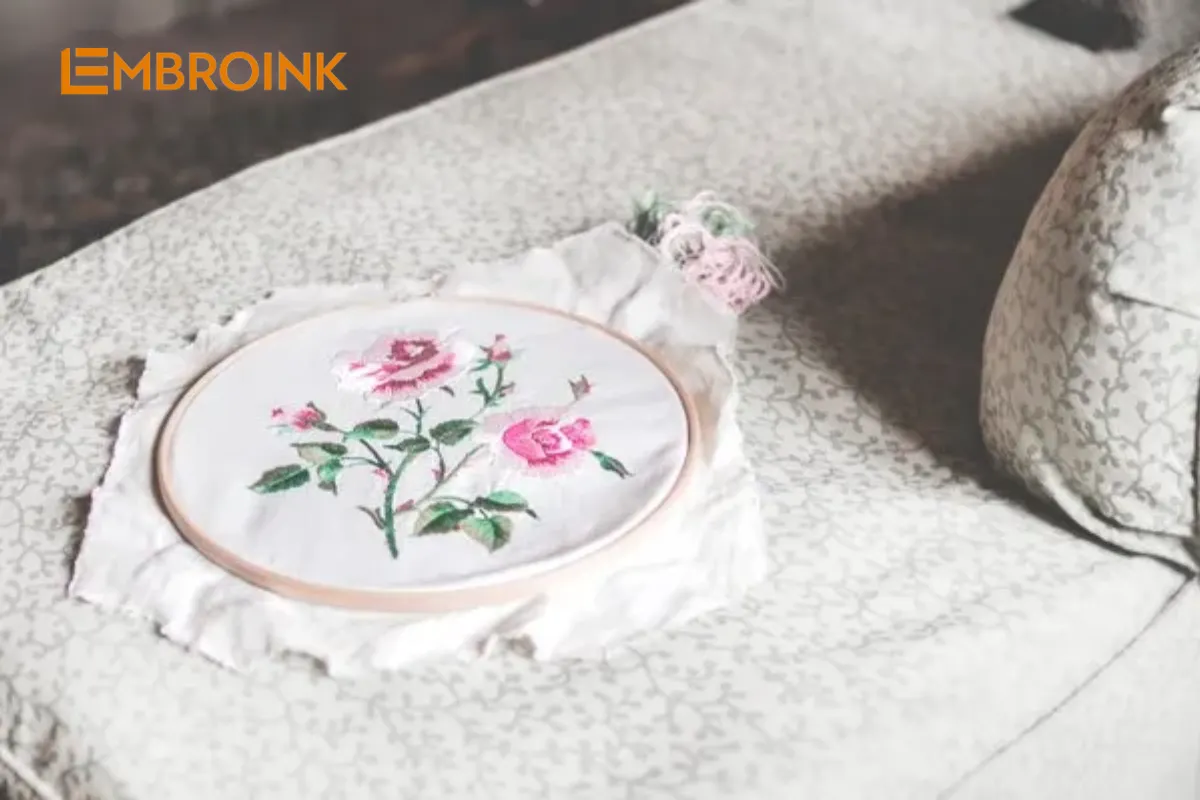
Embroidery encompasses a variety of techniques, each offering distinct effects and styles:
- Hand Embroidery: This is the most traditional and classic method. The embroiderer uses a needle and thread to create patterns by hand. This technique requires time and skill but results in unique and highly artistic products. Hand embroidery includes styles such as cross-stitch, floral embroidery, and raised embroidery.
- Machine Embroidery: With technological advancement, machine embroidery was developed to increase productivity and precision. Modern embroidery machines can create complex patterns quickly and on various materials. Machine embroidery is often used in mass production, but it still maintains a high level of detail and quality.
Comparison between Hand Embroidery and Machine Embroidery: Hand embroidery is more artisanal, offering a warmer and more personal feel, whereas machine embroidery is faster and suitable for large-scale production. Both methods have their own merits depending on the needs and purposes.
Popular locations to embroidering a logo onto uniform
Common positions for embroidering logos on clothing include:
- Left chest of the shirt:
- The chest area is frontal and easily visible, making it an ideal spot to attract customer attention and effectively promote the brand.
- Additionally, this area experiences less contact or friction with external factors, ensuring the embroidered logo remains durable over time.
- Back of the shirt or front portion:
- The back of the shirt offers a sizable area for embroidery, but manufacturers often use an inner lining to maintain the shirt’s structure.
- Therefore, the size of the embroidered logo on the back should be moderate to avoid causing discomfort for the wearer.
- Sleeve of the shirt:
- The sleeve area is relatively small but convenient and spacious, making it a popular choice for embroidering logos on shirts.
- Embroidering logos on the sleeves helps create perfect focal points for the uniform.
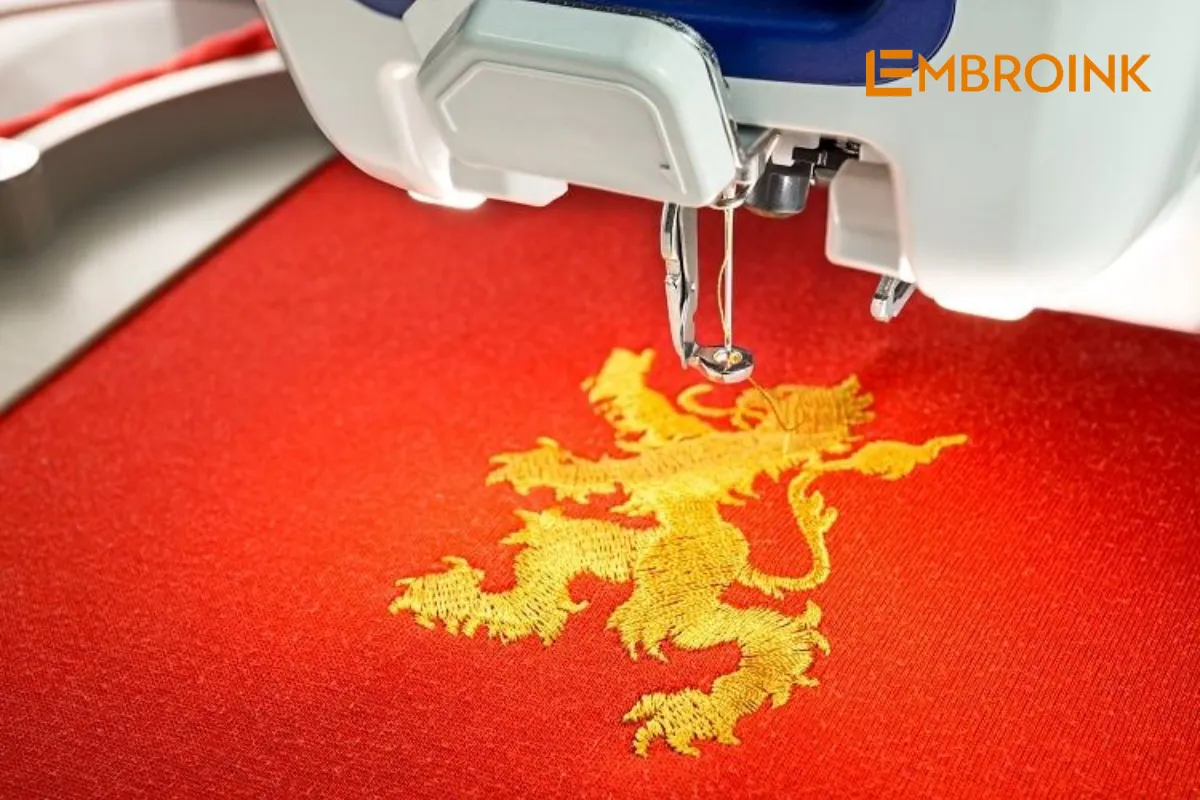
Methods for preserving embroidered logo images
Although embroidered images are quite durable, to maximize their lifespan and maintain their color vibrancy, we need to follow these preservation methods:
- Use cold water for initial washes: During the first few washes, use cold water to prevent the fabric and embroidery from fading.
- Avoid using bleach: Refrain from using bleach on embroidered areas, as it can cause the thread to lose its color.
- Handle stains delicately: If stains are present on the embroidered area, avoid scrubbing vigorously. Instead, gently apply laundry detergent and dab continuously until the stain is removed.
- Iron at moderate temperature: Iron the garment at a moderate temperature setting, preferably using a steam iron. Avoid applying too much heat directly onto the embroidered logo to prevent damage.
I hope these insights will provide you with valuable knowledge to choose, differentiate, and preserve embroidered logos accurately. If you need further advice or have a need to order custom-made products with embroidered logos, feel free to reach out to EmbronInk for expert assistance.

